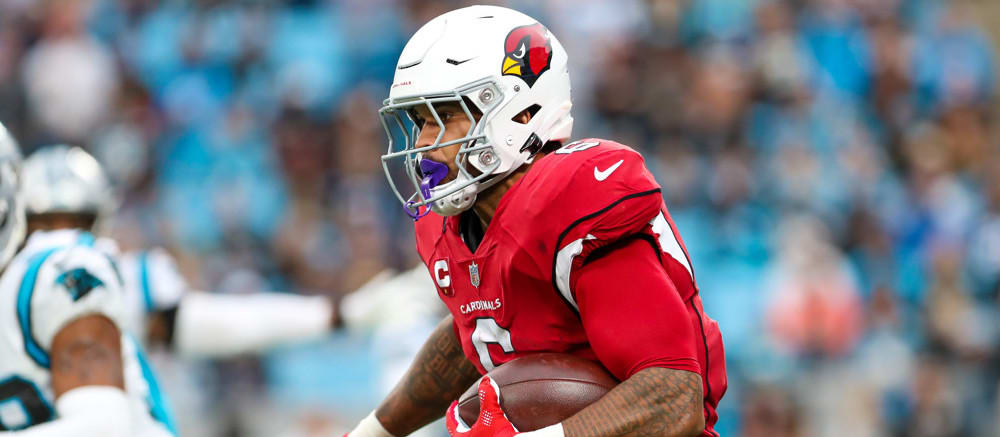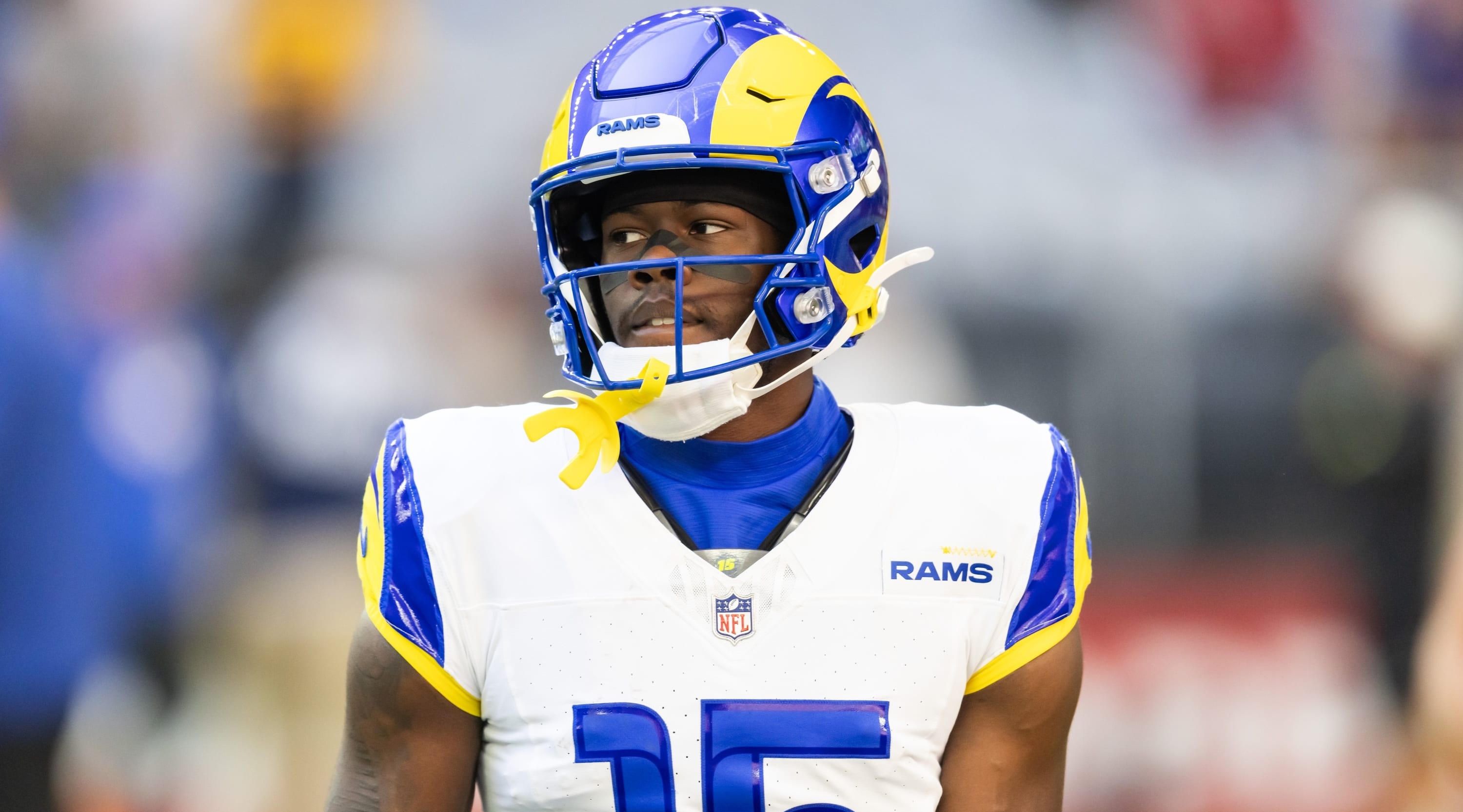Even new fantasy football players might have heard the term 'Zero RB' some number of times, yet its loaded meaning might not be so obvious to those who haven't yet had a chance to look into its deeper theory.
What is the Zero RB Strategy?
First, it's probably worth noting that the strategy is not as extreme as it sounds -- Zero RB should not be understood as literally 'zero running backs,' or even a general disregard for running back production. Even the people drafting with the Zero RB strategy very much mean to post a high point total at running back -- they just have a different idea of how to do it (more on that later). The term Zero RB is almost a tongue-in-cheek way to refer to what's more properly understood as selective running back investment -- a strategy to target price inefficiencies in the running back market.
Particularly in the prehistoric days of fantasy football, running backs would go really high in the draft order, for a number of reasons. One is that the NFL used to less strictly enforce pass interference and especially illegal contact penalties, so league passing production was much lower than it is today overall. Another reason is that fantasy leagues generally used 'standard' scoring, whereas today the norm is PPR (point per reception) or 0.5PPR. A third reason is that many or most leagues started 2RB/2WR/Flex rather than today's convention of 2RB/3WR/Flex. These paradigm shifts have pushed some of the value previously attributed to running backs to any other position, but especially wide receiver.
As those times changed and the values shifted, fantasy markets were slower to react than they would have today, because the game was less developed and there wasn't as much accessible, rapid-response fantasy analysis breaking down the new information. Old conventions of value were often held even as the game changed, which meant an opportunity had opened for fantasy players who were not so committed to the conventions of the prior era. More specifically, some shrewd drafters had noticed that the running backs had generally come to cost too much – or at least, the running back market did not properly acknowledge the durability risks that come with playing the running back position. As long as that was the case, it made sense to opt out of the running back market in the early rounds, where the costs and therefore the risk was particularly high.
How Does the Zero RB Strategy Work?
The old days are gone, and by now Zero RB is no longer a fringe theory. In fact, it might be the most fashionable draft strategy out there, or at least the one referenced the most. Even though it's a more common strategy now and the margins are thinner than they might have been 10 years ago, the Zero RB strategy can still be done effectively by anyone, and with surprisingly little practice.
As the name implies, the first step is budget very selectively for the running back position, especially in the early rounds. The whole Zero RB theory sprung from the simple observation that Running Backs Cost Too Much, so it's worth making an exception in the case that some running back falls far past ADP, thus no longer costing Too Much, but more likely you'll want to plan on going at least the first five rounds of your draft without taking a running back at all. You'll take running backs eventually, of course, but you'll have different targets in mind (more on that later).
Opting out of the running back market in the first five rounds makes it easy to nail it at WR, QB and TE, because you don't have to concern yourself with the 'sleepers' at such positions and instead can pick up the kind of players who reliably project for top-five upside at their positions. You're forfeiting the chance to acquire running backs of the same category in the meantime, but the Zero RB theory pushes back against this fact with the commitment to fading the running backs in that range because they are subjected to durability concerns that don't apply as much to the other three positions.
So while it's true that the Zero RB approach leaves you with a thin running back room at the end of the draft, it also makes it easy to assemble an elite rollout at QB/WR/TE (though primarily targeting WRs early). Remember, in the vast majority of formats you only need to start two running backs, and there's a chance you don't need those running backs to be as productive as most of the other teams in your league, given that you're presumably holding an advantage over those teams when it comes to the sum of QB/WR/TE production.
So What Do I Actually Do With My RBs, Then?
Like previously mentioned, the drafters using Zero RB strategy are not truly punting at running back, and the strategy very much intends to find running back points despite the cheap draft investment. In short, you need to pick running backs who will gain playing time if the more expensive running back ahead of them gets hurt. There are also some occasions where a projected starting running back falls to an acceptably low price for the Zero RB budget -- think 7th/8th-round range backs like James Conner, James Cook and Rachaad White -- so those will be the kind of tools you're working with.
A team using the Zero RB strategy exits a draft with a worse running back projection than their non-Zero RB opponents, but if a costly running back on one of those teams gets hurt then it opens the opportunity for the Zero RB team to poach the heir to that workload. For example, you might use the Zero RB strategy and exit a draft with Rashaad Penny, Elijah Mitchell, AJ Dillon or Samaje Perine as your RB2, behind an RB1 like White, Conner or Cook. On paper, this would be an underwhelming running back group. But remember: if you're strong at WR/QB/TE, you are not quite as dependent on running back production as the other teams. If White/Conner/Cook come through as a decent RB1, then you only need one of your remaining running backs to prove viable. If you draft one of White/Conner/Cook in the seventh and then five other backs after the 10th round, an otherwise poor hit rate of 1/5 still suffices. Some other examples of later-round running backs who would see bigger workloads if the starter were to miss time: Tyler Allgeier, Jerick McKinnon, Damien Harris, Jamaal Williams, Jaylen Warren, Devin Singletary, Tank Bigsby, etc.
Of course, as with any strategy, luck plays a part in whether Zero RB works in a given year. Since the theory is specifically concerned with the heightened durability risk at running back, Zero RB works better the more running backs get hurt in a given year. If the top 10 running backs in the ADP all stay healthy all year, then it could be a rough season for a Zero-RB team. Then again, it's hard to field a truly bad team as long as you nail your picks at receiver, quarterback and tight end, and the Zero RB approach is the easiest way to do that.






































